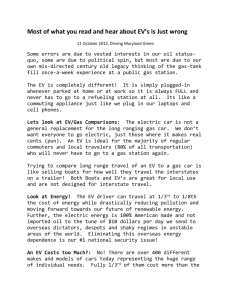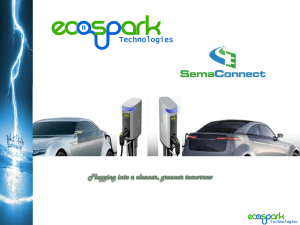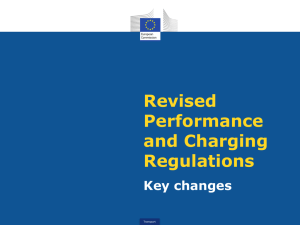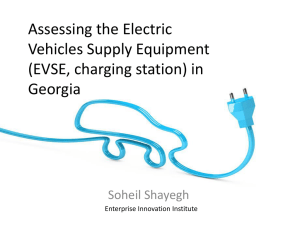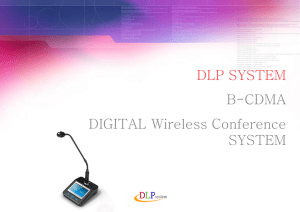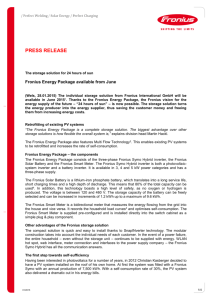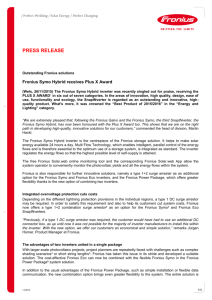Press release
advertisement
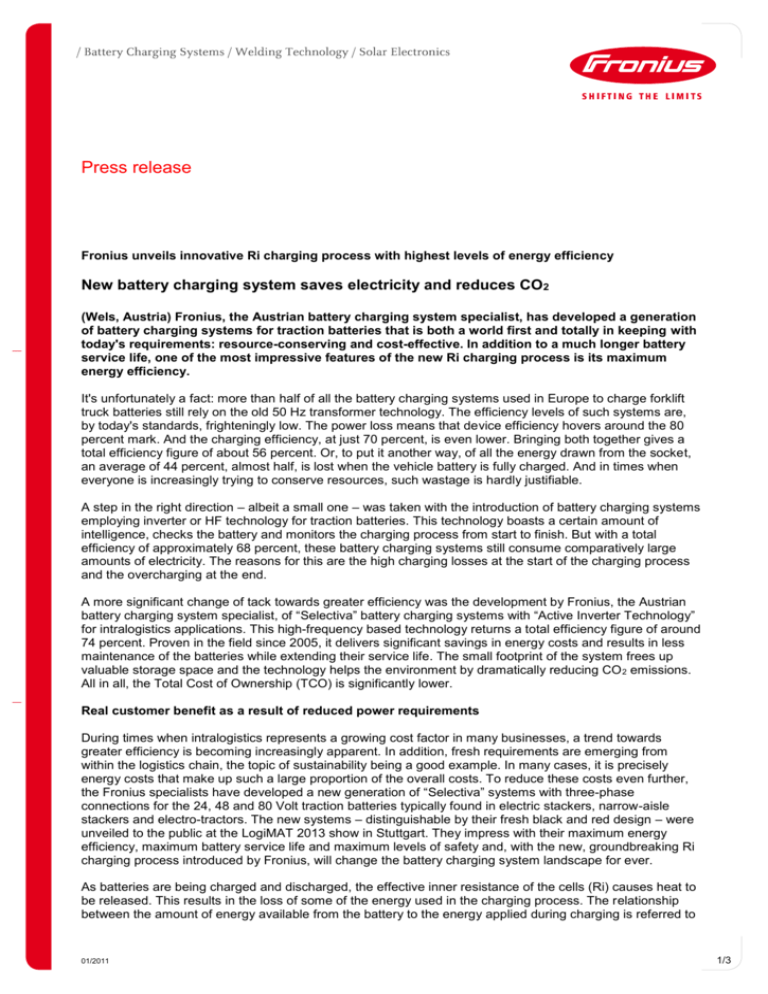
Press release Fronius unveils innovative Ri charging process with highest levels of energy efficiency New battery charging system saves electricity and reduces CO2 (Wels, Austria) Fronius, the Austrian battery charging system specialist, has developed a generation of battery charging systems for traction batteries that is both a world first and totally in keeping with today's requirements: resource-conserving and cost-effective. In addition to a much longer battery service life, one of the most impressive features of the new Ri charging process is its maximum energy efficiency. It's unfortunately a fact: more than half of all the battery charging systems used in Europe to charge forklift truck batteries still rely on the old 50 Hz transformer technology. The efficiency levels of such systems are, by today's standards, frighteningly low. The power loss means that device efficiency hovers around the 80 percent mark. And the charging efficiency, at just 70 percent, is even lower. Bringing both together gives a total efficiency figure of about 56 percent. Or, to put it another way, of all the energy drawn from the socket, an average of 44 percent, almost half, is lost when the vehicle battery is fully charged. And in times when everyone is increasingly trying to conserve resources, such wastage is hardly justifiable. A step in the right direction – albeit a small one – was taken with the introduction of battery charging systems employing inverter or HF technology for traction batteries. This technology boasts a certain amount of intelligence, checks the battery and monitors the charging process from start to finish. But with a total efficiency of approximately 68 percent, these battery charging systems still consume comparatively large amounts of electricity. The reasons for this are the high charging losses at the start of the charging process and the overcharging at the end. A more significant change of tack towards greater efficiency was the development by Fronius, the Austrian battery charging system specialist, of “Selectiva” battery charging systems with “Active Inverter Technology” for intralogistics applications. This high-frequency based technology returns a total efficiency figure of around 74 percent. Proven in the field since 2005, it delivers significant savings in energy costs and results in less maintenance of the batteries while extending their service life. The small footprint of the system frees up valuable storage space and the technology helps the environment by dramatically reducing CO 2 emissions. All in all, the Total Cost of Ownership (TCO) is significantly lower. Real customer benefit as a result of reduced power requirements During times when intralogistics represents a growing cost factor in many businesses, a trend towards greater efficiency is becoming increasingly apparent. In addition, fresh requirements are emerging from within the logistics chain, the topic of sustainability being a good example. In many cases, it is precisely energy costs that make up such a large proportion of the overall costs. To reduce these costs even further, the Fronius specialists have developed a new generation of “Selectiva” systems with three-phase connections for the 24, 48 and 80 Volt traction batteries typically found in electric stackers, narrow-aisle stackers and electro-tractors. The new systems – distinguishable by their fresh black and red design – were unveiled to the public at the LogiMAT 2013 show in Stuttgart. They impress with their maximum energy efficiency, maximum battery service life and maximum levels of safety and, with the new, groundbreaking Ri charging process introduced by Fronius, will change the battery charging system landscape for ever. As batteries are being charged and discharged, the effective inner resistance of the cells (Ri) causes heat to be released. This results in the loss of some of the energy used in the charging process. The relationship between the amount of energy available from the battery to the energy applied during charging is referred to 01/2011 1/3 as the charging efficiency. In other words, the lower the charging losses, the higher the charging efficiency. This is where the Fronius specialists came in. They complained that the charge losses were being caused by predefined charging characteristics in which a preset, and sometimes too high, charging current was applied to the battery at the start of the charging process, regardless of the state of charge of the battery. To alter this state of affairs, the Austrian engineers came up with the Ri charging process with its own characteristic. The Ri charging process – a stroke of genius from Fronius The effective inner resistance of the battery “Ri” is a battery-specific value that changes during charging and discharging due to fluctuating acid concentrations and parasitic effects, such as diffusion processes, polarisation-overvoltage or the conversion of lead sulphate into lead oxide. The really special feature of the unique Ri characteristic is that the charging voltage is determined by measuring the effective inner resistance. This ensures that the charging current adapts automatically to remain in line with the effective inner resistance curve of the battery. Hence, if the effective inner resistance rises such that the current-input capability of the battery is lower than when charging began, then the charging current will be lower and charge losses avoided. Should the effective inner resistance drop during charging (current-input capability increases), the charging current is increased automatically so that it can be reduced later during the charging process, again as a function of the increasing effective inner resistance, since the battery will now be fully charged and its current-input capability correspondingly lower. This means that every charging cycle for every battery is a one-off with its own individual characteristic. To enable the battery charging system to specify the starting value and the ongoing progression of the charging voltage, the current battery state of charge is continually recorded. During this process, the type of battery in question, how old it is, its temperature and discharge level are all monitored. The battery charging system software then uses this battery information to modify the individual charging phases by keeping the voltage curve constant and regulating the charging current in line with the effective inner resistance curve. The Ri charging process from Fronius is therefore a self-regulating process – a true stroke of genius. The charge losses at the start of charging shrink to a minimum due to the lower power requirement. The consequences: a saving in energy and only insignificant warming of the battery. There is hardly any overcharging at the end of charging, as the current drops. Thanks to the individual Ri charging characteristic, the newly developed “Selectiva” devices achieve charging efficiency levels that were previously inconceivable: a staggering 90 percent. Combining this with device efficiency, which Fronius has been able to increase to 93 percent by commercially acceptable means, results in a total efficiency value of 84 percent – a figure that has never been attained before. Particularly energy efficient is the fact that one only has to specify the battery voltage and the charging time, as in reality many batteries that are connected to the battery charging system tend to be only partially discharged. By specifying a charging time, however, the charging process can be extended over the whole period. This enables the battery to be charged very gently due to the lower energy input and the correspondingly lower warming effect. For companies with fluctuating forklift truck utilisation levels, harmful overcharging is prevented and the precious batteries remain undamaged. Furthermore, peak currents are prevented in situations where the charging of a number of forklift truck batteries starts simultaneously at the end of a shift. Peak currents are to be avoided, as they drive up costs. Enhancements that shift the limits Achieving maximum battery service life is only one of the many features that make the new generation of Ri characteristic devices from Fronius so attractive. The new devices boast many other enhancements that supplement the outstanding features already present in the existing “Selectiva” range. A few key facts: the largest variant (80 V with 180 A) now weighs only 30 kg instead of 40 kg and is smaller in size. The ventilation system has also been reworked. It now reduces contamination inside the battery charging system even further. The focus for the Fronius developers was to significantly improve safety, user-friendliness, service and system monitoring. Our highly trained employees in the Fronius Sales and Service network will be able to tell you about other energy-saving and trail-blazing features of the “Selectiva” series with the Ri characteristic. Characters: 7,573 (excluding spaces) 01/2011 2/3 For more information, see: Ri charging process: www.fronius.com/ri-ladeprozess Photo 1 The new generation of “Selectiva” battery charging systems with the innovative Ri characteristic sets new standards in terms of energy efficiency and battery service. life (Photo: Fronius) Image file: Fronius_Selectiva_Ri_Energieeffizienz_01.jpg Photo 2 In each phase of the Ri charging process, the battery only receives the energy that it can actually absorb during that phase. Maximum energy efficiency levels are achieved as a result. (Photo: Fronius) Image file: Fronius_Selectiva_Ri_Energieeffizienz_02.jpg Photo 3 As battery charging consists of two sequential processes, logistics decisionmakers need to consider the total efficiency figure. (Photo: Fronius) Image file: Fronius_Selectiva_Ri_Energieeffizienz_03.jpg Copyright to photos: Fronius International GmbH, reproduction free of charge About Fronius International GmbH Fronius International GmbH is an Austrian company with headquarters in Pettenbach and other sites in Wels, Thalheim, Steinhaus and Sattledt. With 3,239 employees worldwide, the company is active in the fields of battery charging systems, welding technology and solar electronics. Around 93% of its products are exported through 19 international Fronius subsidiaries and sales partners/representatives in over 60 countries. With its innovative products and services and 864 active patents, Fronius is a global technology leader. Fronius International GmbH Enquiries: Boris Ringwald, +43 664 602416436, ringwald.boris@fronius.com Copies: Boris Ringwald, Froniusplatz 1, 4600 Wels, Austria Fronius U.K. Limited Enquiries: Ross Adams, +44 7580 076988, adams.ross@fronius.com Copies: Ross Adams, Maidstone Road, Kingston, Milton Keynes, MK10 0BD United Kingdom 01/2011 3/3


